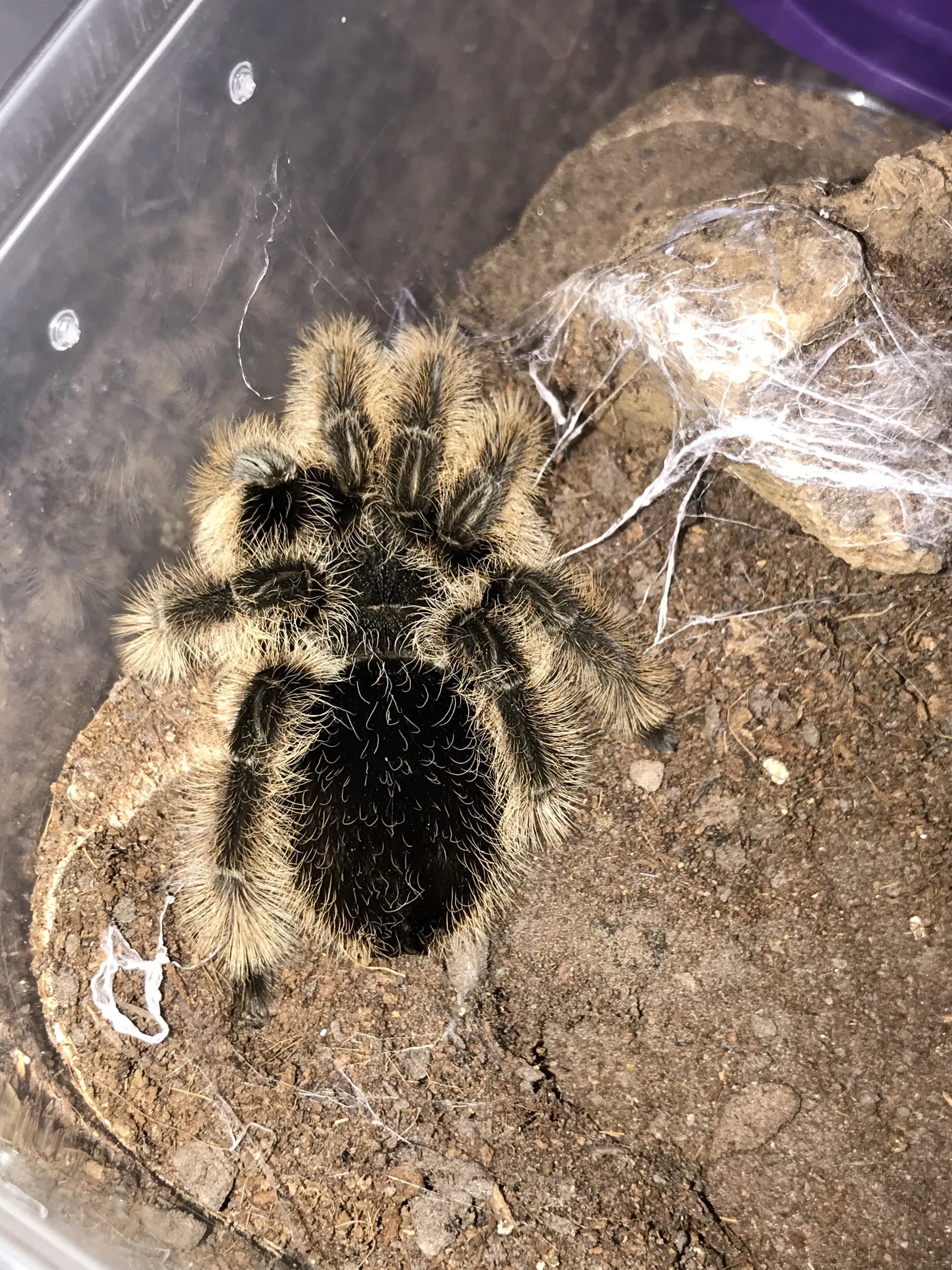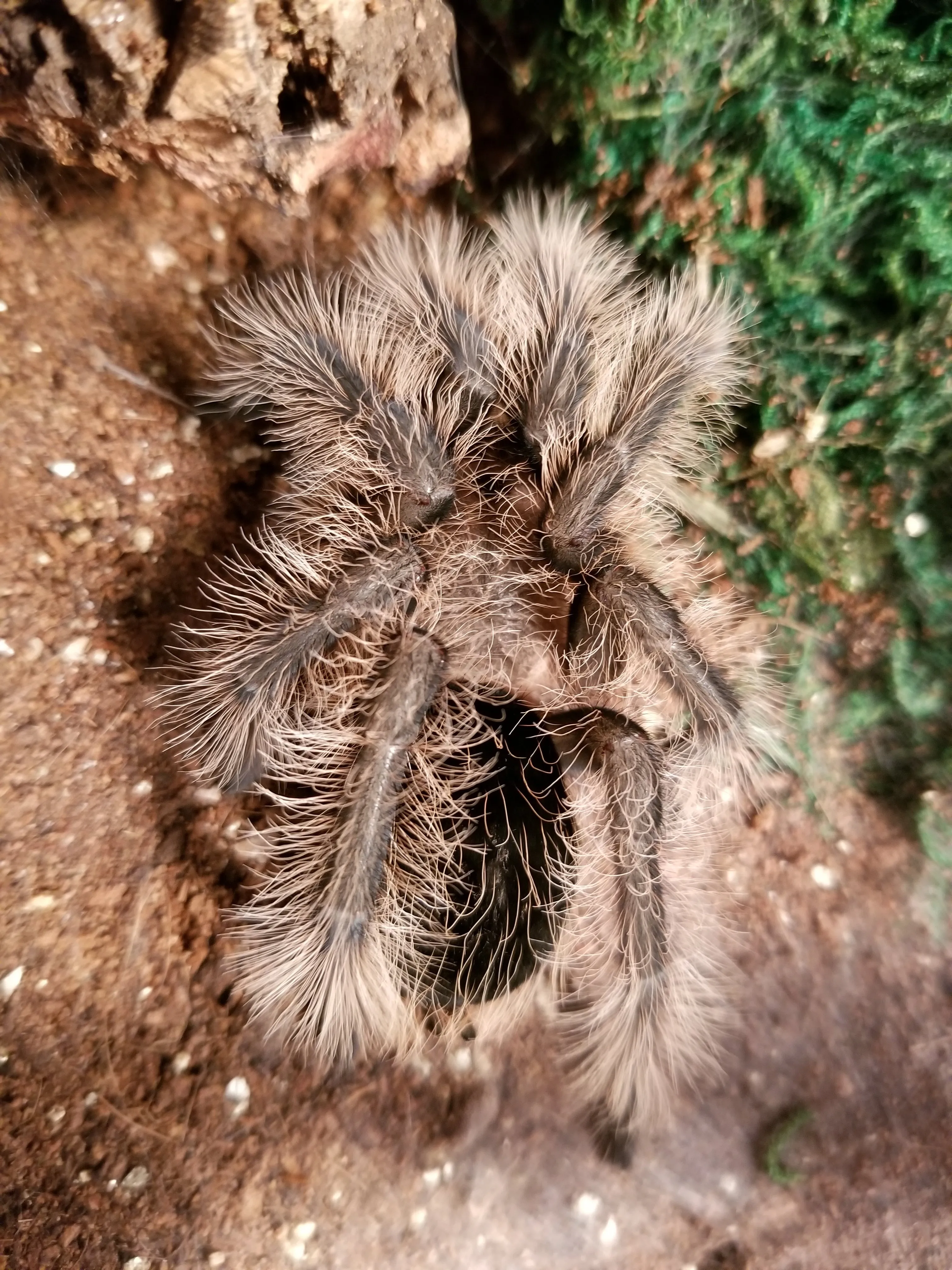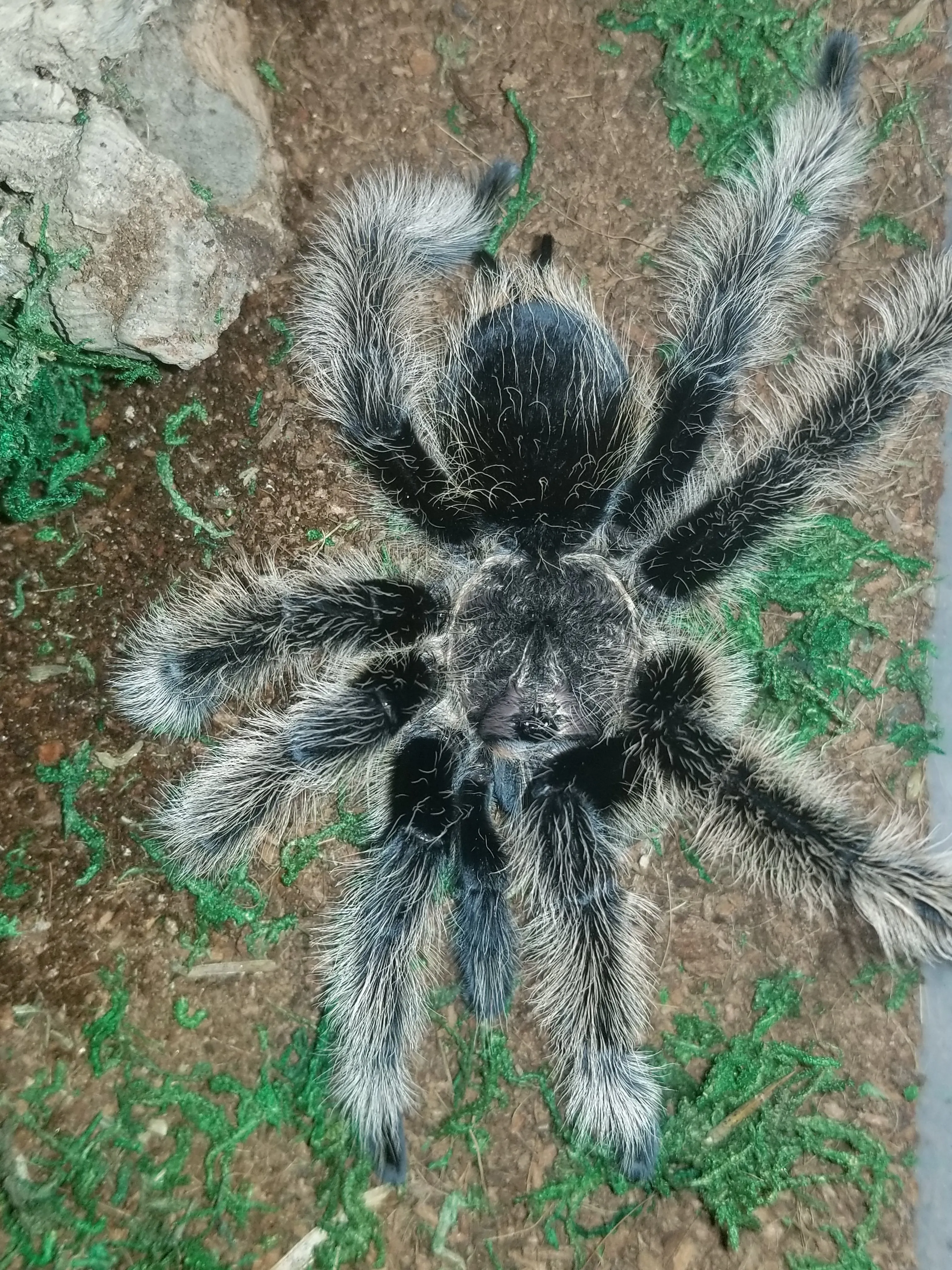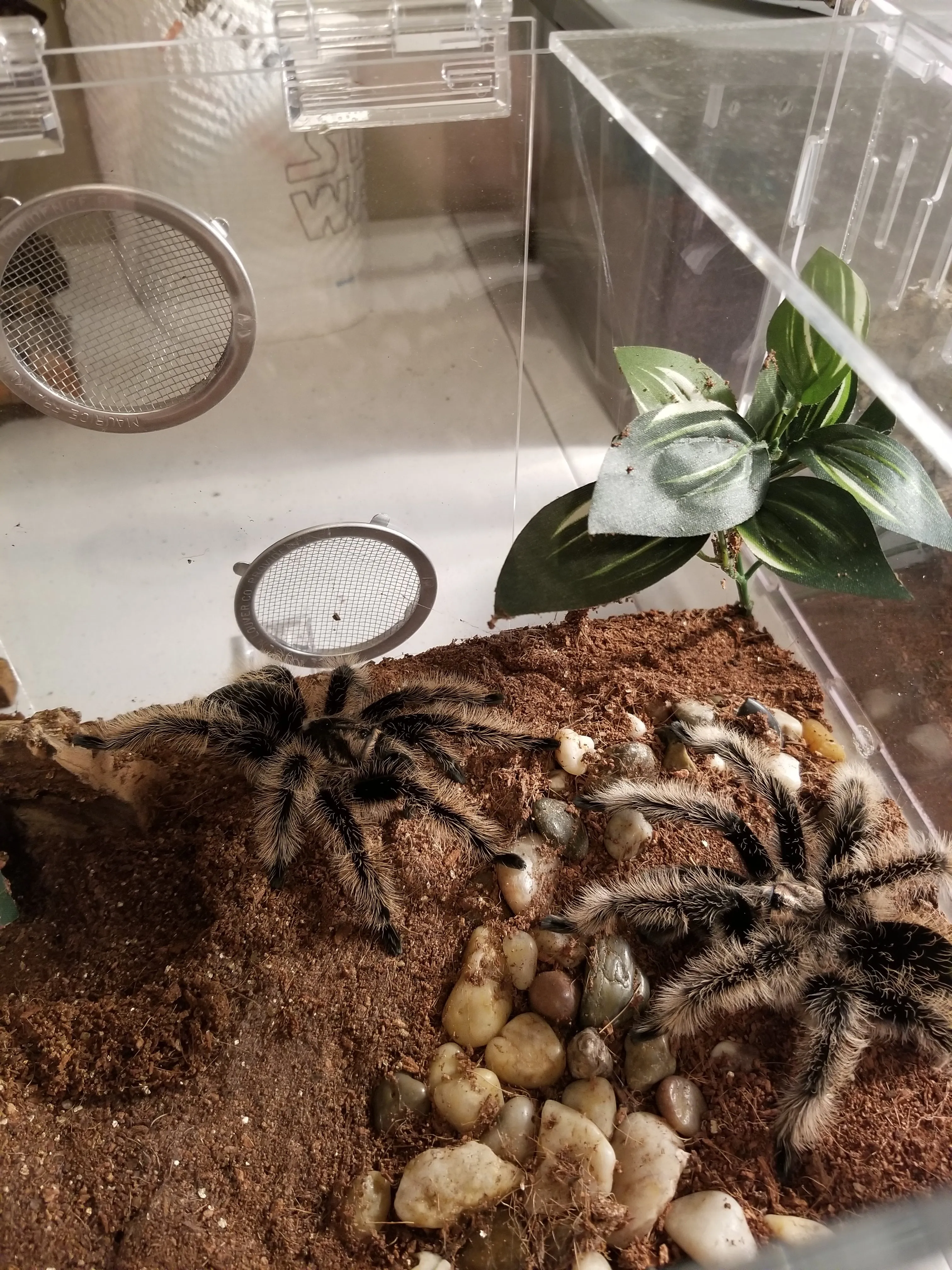The B albo tarantula, scientifically known as Brachypelma albopilosum, is a captivating arachnid that has gained immense popularity among tarantula enthusiasts. With its docile nature, striking appearance, and relatively easy care requirements, the B albo tarantula makes a wonderful pet for both novice and experienced keepers. This article delves into five fascinating facts about the B albo tarantula, exploring its unique characteristics, habitat, diet, behavior, and lifespan. Discover what makes this species so special and learn more about why it continues to be a favorite in the tarantula world. From its fuzzy appearance to its gentle temperament, the B albo tarantula offers a glimpse into the intriguing lives of these fascinating creatures. This guide aims to provide a comprehensive overview, highlighting key aspects that contribute to its appeal and the essential information needed to understand and appreciate this remarkable spider.
B albo Tarantula Top 5 Facts
Appearance and Characteristics
The B albo tarantula is instantly recognizable by its distinctive appearance. Often referred to as the Curly Hair Tarantula due to its unique setae, or hairs, that curl across its body, this spider presents a striking visual. These hairs give it a fuzzy appearance, ranging in color from a dark brown to a bronze hue, with golden or copper highlights that add to its allure. The contrast between the dark base color and the lighter, curled hairs is a defining feature of the B albo tarantula. The spider’s legs and carapace are also covered in these characteristic hairs, enhancing its overall aesthetic appeal. Understanding the physical attributes of the B albo tarantula is crucial to appreciating its beauty and uniqueness in the tarantula world. Observing the intricate patterns and textures of its body provides insight into the species’ adaptability and evolution. It is this combination of features that sets the B albo tarantula apart from other species.
Size and Appearance

The size of a B albo tarantula can vary based on factors like age, sex, and the amount of food they consume. Adult females are generally larger than males, with a leg span that can reach up to 6 inches or more. Males tend to be slightly smaller, typically reaching around 5 inches. The overall appearance is robust, with a body and legs that appear well-proportioned. As they mature, they become even more striking, their color becoming more pronounced. This visual transformation is a key aspect of the B albo tarantula’s life cycle and adds to the intrigue of keeping this species as a pet. The gradual increase in size also demonstrates the tarantula’s health and well-being, making it a joy to observe as it grows.
Coloration and Markings
The coloration of the B albo tarantula is a key distinguishing feature. The body is typically a dark brown, almost black in some specimens, providing a striking backdrop for the lighter, curled hairs. These hairs create a textured, fuzzy appearance and contribute to the spider’s name, Curly Hair Tarantula. The tips of the legs and the carapace may have a golden or bronze sheen, adding further visual interest. As the tarantula matures, the coloration may deepen and become richer, highlighting its physical characteristics. The unique markings and colors, combined with its overall size, give the B albo tarantula its distinctive appearance, making it a favorite among tarantula keepers. This coloration serves not only as a visual highlight but may also offer some level of camouflage in its natural environment.
Habitat and Distribution
Understanding the natural habitat of the B albo tarantula is crucial to providing proper care. Native to the tropical dry forests of Central America, particularly Costa Rica and Honduras, these tarantulas thrive in environments with specific conditions. In their natural habitat, they typically reside in burrows, often at the base of trees or under rocks, to protect themselves from predators and the elements. The availability of suitable habitats, characterized by loose soil and access to moisture, is essential for their survival. When replicating their natural environment in captivity, it is important to consider these factors to ensure the tarantula’s well-being. The tarantula’s ability to adapt to these diverse settings also influences their specific behaviors, further highlighting the importance of understanding their native habitats.
Natural Habitat

The natural habitat of the B albo tarantula is characterized by a warm, tropical climate. The forests where these tarantulas live are rich in vegetation, providing ample cover and shelter. They prefer environments with moderate humidity and access to moisture, vital for their survival. Their burrows are crucial for regulating temperature and humidity levels, keeping them safe from predators and the harsh elements. The ability to create and maintain a burrow is central to their behavior and lifestyle. Replicating this natural habitat in captivity is important for providing a comfortable and secure environment for the tarantula, ensuring its physical and psychological health. This setup includes the use of substrate, hides, and proper environmental controls.
Geographical Distribution
The B albo tarantula is primarily found in Central America. Specifically, they are native to the tropical dry forests of Costa Rica and Honduras. These regions offer the ideal climate and ecological conditions that support their survival. The distribution of the B albo tarantula is largely influenced by the availability of suitable habitats, characterized by loose soil and adequate moisture. Awareness of this geographical information can help in understanding their conservation status and the potential threats they face. It also helps in managing their captive environments to ensure their well-being. The fact that they are endemic to specific regions adds to their charm as they are a symbol of the biodiversity of Central America.
Diet and Feeding Habits
The dietary habits of the B albo tarantula are relatively straightforward, primarily consisting of insects. In their natural environment, they are opportunistic predators, consuming whatever prey they can capture. This diet includes a variety of insects, like crickets, grasshoppers, mealworms, and roaches. The diet in captivity is similar, with the availability and size of prey adjusted to the tarantula’s growth stage and size. Ensuring a balanced diet is crucial for its health and well-being. The feeding habits of the B albo tarantula reveal important insights into their predatory behavior and physiological adaptations. Understanding what they eat and how often they eat provides essential knowledge for their care and maintenance.
What They Eat

The primary diet of the B albo tarantula consists of insects. Crickets are a staple, providing a good source of protein and nutrients. Mealworms and roaches are also common, offering variety and nutritional diversity. The size of the prey is important, with smaller prey offered to younger tarantulas and larger prey for adults. Occasionally, they may consume other small invertebrates, but insects form the bulk of their diet. The availability of these insects in captivity is critical to maintaining the health of the tarantula. Choosing quality insects and providing a balanced diet are essential for their overall health and well-being. Careful consideration of the nutritional value of the insects ensures the tarantula receives all the necessary vitamins and minerals.
Feeding Frequency
The frequency with which you feed a B albo tarantula varies based on its age and size. Spiderlings, or young tarantulas, may need to be fed more often, perhaps every other day or every few days. As the tarantula grows, the feeding frequency decreases. Adult tarantulas can be fed once or twice a week. Observing the tarantula’s behavior and abdomen size is essential. A well-fed tarantula will have a round abdomen. Overfeeding should be avoided. If a tarantula refuses food, it may be in premolt, and it is best to remove the food. The feeding schedule needs to be adjusted based on their growth stages to ensure they receive the right amount of food. Monitoring and adjusting their diet contribute significantly to their overall health and longevity.
Behavior and Temperament
The B albo tarantula is known for its docile and calm temperament, making it a popular choice for beginner tarantula keepers. Compared to other species, they are less prone to defensive behaviors. However, like all tarantulas, they possess a range of defensive strategies, and proper handling is essential. Understanding these behaviors is crucial for ensuring both the safety of the keeper and the well-being of the spider. Their docile nature contributes significantly to their appeal as pets, making them less intimidating than other more aggressive tarantula species. This behavior is a factor in how keepers interact with them and establish trust. Respecting their space and understanding their body language are essential components of responsible ownership.
Defensive Behaviors

While generally docile, the B albo tarantula has defense mechanisms. One primary defense is the urticating hairs, which are barbed bristles located on their abdomen. When threatened, the tarantula can flick these hairs towards the perceived threat, causing irritation. They may also exhibit a threat posture, raising their front legs and fangs, and may try to flee. Understanding these defensive behaviors is crucial when interacting with the tarantula. It is important to avoid startling them and always approach them with caution. The urticating hairs are a key defense mechanism against predators, but they can also cause irritation in humans. Proper handling and respect for their personal space will minimize any stress and potential defense reactions.
Interaction with Humans
Interaction with humans is generally positive with the B albo tarantula due to its docile nature. Many keepers handle their B albo tarantulas, though it is essential to do so with caution and respect. Always handle the tarantula gently and avoid sudden movements. It is advisable to handle them close to the ground or a soft surface, reducing the risk of injury if they fall. Proper handling requires a calm approach and avoiding any behavior that could provoke a defensive response. The calm temperament of the B albo tarantula, combined with careful handling techniques, contributes to a positive experience for both the keeper and the spider. Understanding their body language and being aware of potential triggers will enhance this interaction.
Lifespan and Conservation
The lifespan of the B albo tarantula is a significant factor to consider when choosing one as a pet. Females typically live much longer than males, making it a long-term commitment. Understanding the lifespan can help in planning and providing for the spider’s needs throughout its life. Awareness of conservation status provides a framework for understanding the pressures on the species. Knowing the lifespan and conservation status is crucial to ensuring the well-being of the species and the responsible stewardship of these animals. The lifespan is also influenced by care, diet, and environmental factors, so appropriate care will influence the length of time you will have your pet.
Lifespan in Captivity

In captivity, the lifespan of a B albo tarantula varies based on sex and care. Female B albo tarantulas can live for 10 to 20 years, sometimes even longer with excellent care. Male B albo tarantulas have a shorter lifespan, typically living for 3 to 5 years after reaching maturity. Providing proper care, including a suitable habitat, balanced diet, and appropriate environmental conditions, is essential for maximizing their lifespan. Knowing the lifespan helps keepers anticipate and provide for the spider’s changing needs over time. The long lifespan of the female makes the B albo a rewarding, long-term companion. Careful monitoring, appropriate feeding, and a stable environment all contribute to a healthy, long life for the spider.
Conservation Status
The B albo tarantula is not currently listed as threatened or endangered by major conservation organizations. They are relatively common in the pet trade. It is important to support ethical breeders and avoid purchasing wild-caught specimens. The ongoing habitat loss in their native regions may pose a threat. Conservation efforts include supporting responsible breeding practices, habitat preservation, and educating the public about these amazing creatures. Staying informed about their conservation status helps ensure the continued survival of the B albo tarantula in the wild. Careful stewardship by ethical breeders and responsible pet owners is crucial to maintaining a healthy population of B albo tarantulas.
In conclusion, the B albo tarantula is a fascinating species, celebrated for its distinctive appearance, docile temperament, and relatively easy care requirements. From its fuzzy, curly hairs to its calm demeanor, this tarantula offers an engaging experience for both novice and experienced keepers. Understanding its natural habitat, diet, and behavior contributes to providing excellent care and ensuring its well-being. The lifespan and conservation status also play significant roles, highlighting the responsibilities of tarantula keepers. By appreciating these five facts, we gain a deeper understanding of the B albo tarantula and its place in the diverse world of arachnids. This knowledge allows us to not only enjoy the beauty of this species but also to contribute to its conservation and preservation, ensuring that future generations can also marvel at these captivating creatures.
